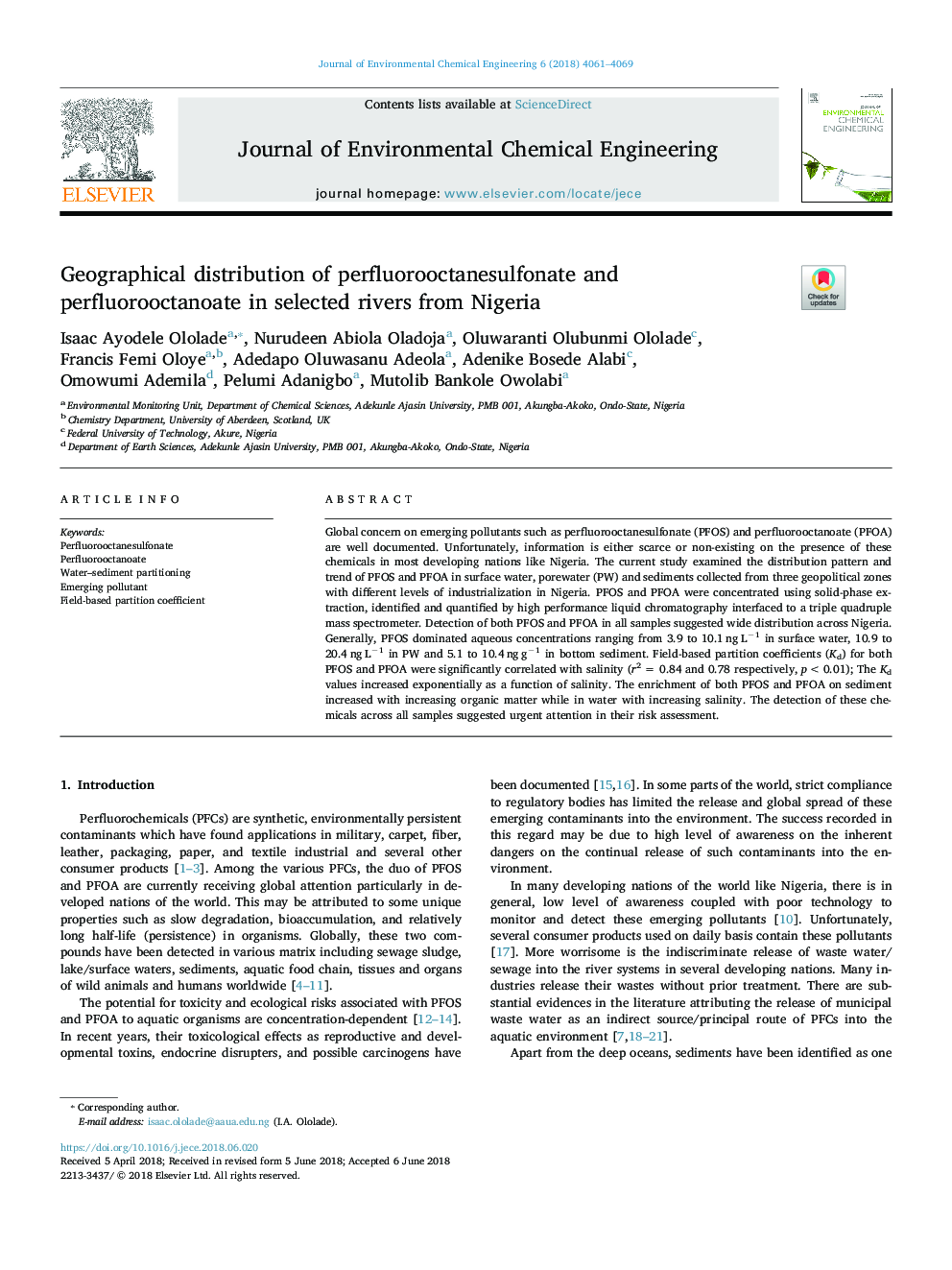| Article ID | Journal | Published Year | Pages | File Type |
|---|---|---|---|---|
| 6663852 | Journal of Environmental Chemical Engineering | 2018 | 9 Pages |
Abstract
Global concern on emerging pollutants such as perfluorooctanesulfonate (PFOS) and perfluorooctanoate (PFOA) are well documented. Unfortunately, information is either scarce or non-existing on the presence of these chemicals in most developing nations like Nigeria. The current study examined the distribution pattern and trend of PFOS and PFOA in surface water, porewater (PW) and sediments collected from three geopolitical zones with different levels of industrialization in Nigeria. PFOS and PFOA were concentrated using solid-phase extraction, identified and quantified by high performance liquid chromatography interfaced to a triple quadruple mass spectrometer. Detection of both PFOS and PFOA in all samples suggested wide distribution across Nigeria. Generally, PFOS dominated aqueous concentrations ranging from 3.9 to 10.1â¯ngâ¯Lâ1 in surface water, 10.9 to 20.4â¯ngâ¯Lâ1 in PW and 5.1 to 10.4â¯ngâ¯gâ1 in bottom sediment. Field-based partition coefficients (Kd) for both PFOS and PFOA were significantly correlated with salinity (r2 = 0.84 and 0.78 respectively, p < 0.01); The Kd values increased exponentially as a function of salinity. The enrichment of both PFOS and PFOA on sediment increased with increasing organic matter while in water with increasing salinity. The detection of these chemicals across all samples suggested urgent attention in their risk assessment.
Related Topics
Physical Sciences and Engineering
Chemical Engineering
Chemical Engineering (General)
Authors
Isaac Ayodele Ololade, Nurudeen Abiola Oladoja, Oluwaranti Olubunmi Ololade, Francis Femi Oloye, Adedapo Oluwasanu Adeola, Adenike Bosede Alabi, Omowumi Ademila, Pelumi Adanigbo, Mutolib Bankole Owolabi,
